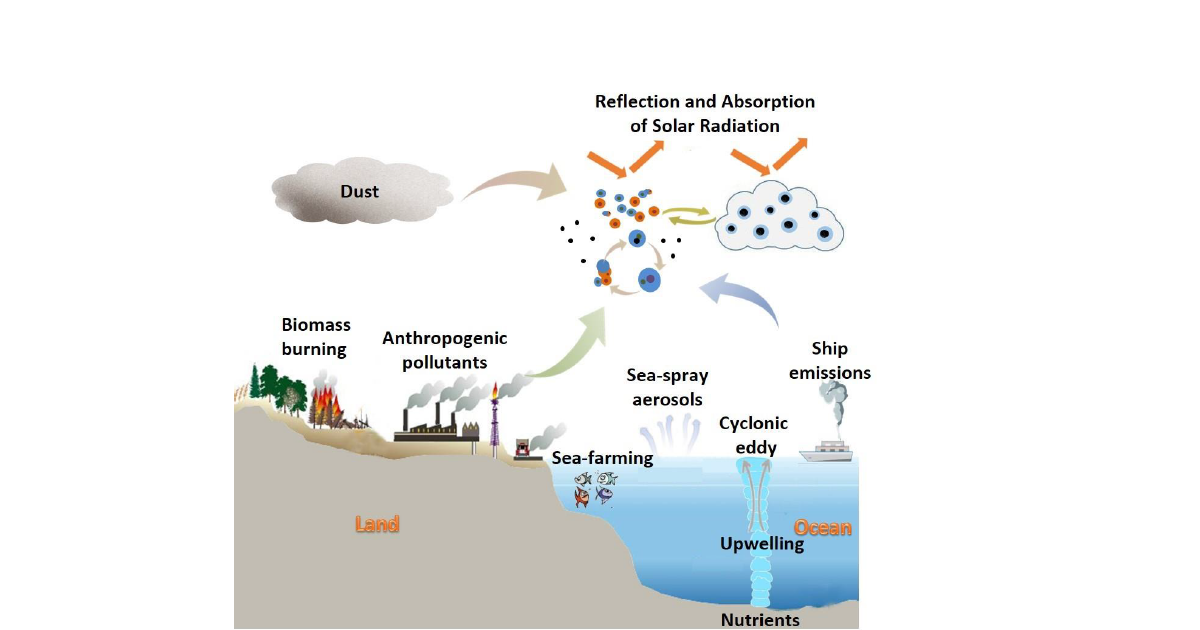Air Pollution and Climate Issues in the Coastal Atmosphere of China
A special issue of Atmosphere (ISSN 2073-4433). This special issue belongs to the section "Air Quality".
Deadline for manuscript submissions: closed (15 February 2023) | Viewed by 20413

Special Issue Editors
Interests: nitrogen cycling in atmosphere; secondary aerosols and climate effects; statistical algorithm developed for environmental science
Special Issues, Collections and Topics in MDPI journals
Interests: PM2.5; O3; organics; amines; sea-salt aerosols
Special Issue Information
Dear Colleagues,
Benefiting from better nature and economic environments, an increasing population has migrated from inland areas to coastal cities in China during the last several decades and, thus, accelerated the expansion of the latter. An increasing energy consumption, urbanization, ocean exploitation, etc., generate short-term stresses mitigating air pollution and long-term challenges to confront the climate change. Although the air quality in most coastal cities in China is better than that in inland cities, the exceedance of air pollutants in former cities has been continuously reported, to some extent, including some extreme air pollution events. The air pollution reflects a variety of mixed contributions and interactions from natural and anthropogenic emissions, inland and marine emissions, transported and localized sources. The complexity raises the difficulties of improving the air quality in coastal cities from a relatively low level to an even lower level. Moreover, to address climate changes such as carbon peak and neutrality in coastal environments of China, the complexity is as high as that regarding air pollution.
In recognition of the complexity, the open access journal Atmosphere is hosting a Special Issue to showcase the most recent findings and new directions related to air pollution, climate issues and the links in between of coastal atmospheres in China, encouraging overview papers regarding inter-disciplinary campaigns in coastal atmospheres. Original results related to emissions, field and laboratory experiments, managements and policies, models and review papers are all welcome as contributions
Prof. Dr. Xiaohong Yao
Dr. Jialiang Feng
Dr. Yujiao Zhu
Guest Editors
Manuscript Submission Information
Manuscripts should be submitted online at www.mdpi.com by registering and logging in to this website. Once you are registered, click here to go to the submission form. Manuscripts can be submitted until the deadline. All submissions that pass pre-check are peer-reviewed. Accepted papers will be published continuously in the journal (as soon as accepted) and will be listed together on the special issue website. Research articles, review articles as well as short communications are invited. For planned papers, a title and short abstract (about 250 words) can be sent to the Editorial Office for assessment.
Submitted manuscripts should not have been published previously, nor be under consideration for publication elsewhere (except conference proceedings papers). All manuscripts are thoroughly refereed through a single-blind peer-review process. A guide for authors and other relevant information for submission of manuscripts is available on the Instructions for Authors page. Atmosphere is an international peer-reviewed open access monthly journal published by MDPI.
Please visit the Instructions for Authors page before submitting a manuscript. The Article Processing Charge (APC) for publication in this open access journal is 2400 CHF (Swiss Francs). Submitted papers should be well formatted and use good English. Authors may use MDPI's English editing service prior to publication or during author revisions.
Keywords
- PM2.5
- O3
- VOC
- SOA
- sulfate aerosol
- ammonium nitrate
- aerosol pH
- particle number concentration
- cloud condensation nuclei
- carbon sink
Benefits of Publishing in a Special Issue
- Ease of navigation: Grouping papers by topic helps scholars navigate broad scope journals more efficiently.
- Greater discoverability: Special Issues support the reach and impact of scientific research. Articles in Special Issues are more discoverable and cited more frequently.
- Expansion of research network: Special Issues facilitate connections among authors, fostering scientific collaborations.
- External promotion: Articles in Special Issues are often promoted through the journal's social media, increasing their visibility.
- Reprint: MDPI Books provides the opportunity to republish successful Special Issues in book format, both online and in print.
Further information on MDPI's Special Issue policies can be found here.







